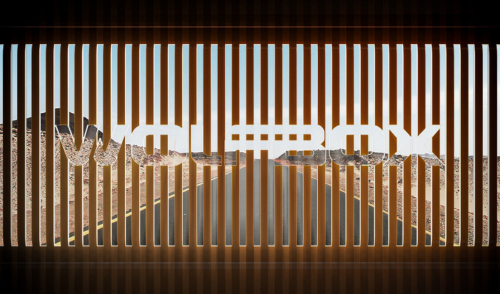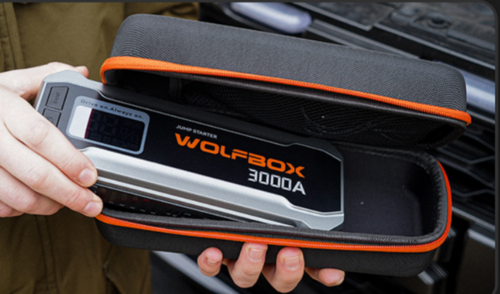Inside this Article:
- 1. High-Quality Recording: Why Clear Footage Matters
- 2. Wide-Angle Lens: Capturing More of the Road
- 3. Dual Camera Functionality: Front and Rear View Recording
- 4. Smart Features: Enhancing Safety Beyond Recording
- 5. Parking Mode: 24/7 Vehicle Protection
- 6. Easy Installation and Discreet Design
- 7. Storage and Cloud Connectivity: Never Lose Important Footage
- 8. Legal and Insurance Benefits
- Conclusion: Why a Rear View Mirror Dash Cam is Your Best Driving Companion
- FAQs
In today’s fast-paced world, road safety is a top priority for every driver. Accidents happen unexpectedly, and having solid evidence can make a huge difference. This is where a rear view mirror dash cam becomes your ideal driving companion. From recording crystal-clear video to offering smart features that enhance safety, dash cams have evolved into essential tools for modern drivers.
1. High-Quality Recording: Why Clear Footage Matters
A dash cam’s primary function is to record your journeys, and high-quality video recording is critical. The best rear view mirror dash cams offer up to 4K resolution, ensuring that every detail is captured clearly. Whether it’s reading license plates or identifying road signs, clarity makes a big difference when reviewing footage.
Accidents can happen at any time, day or night, which is why low-light performance is also important. Many dash cams come equipped with night vision, enabling them to record even in dark or low-light conditions. This is particularly valuable when driving on poorly lit roads or during night-time incidents. A clear, high-quality video helps in proving fault and can be used in insurance claims or legal disputes.
2. Wide-Angle Lens: Capturing More of the Road
A significant advantage of modern dash cams is the wide-angle lens. With a wider field of view, a rear view mirror dash cam can capture more of your surroundings, reducing blind spots and providing a more comprehensive record of the road. This is crucial during accidents where details from all angles matter.
The standard 120-degree lens may miss critical details, whereas a 170-degree wide-angle lens ensures you capture every aspect of the scene. However, it's also important to note that modern dash cams are equipped with technology to reduce distortion, ensuring that the wide-angle footage remains clear and accurate.

3. Dual Camera Functionality: Front and Rear View Recording
One of the most notable features of a rear view mirror dash cam is its dual-camera functionality. This means the dash cam not only records the front view but also captures what's happening behind your vehicle. In the case of rear-end collisions, which are common, having footage of both perspectives is extremely valuable.
Rear cameras are usually integrated seamlessly into the rear view mirror dash cam , keeping your dashboard clutter-free while offering comprehensive coverage. Whether it’s a minor fender bender or a more serious accident, dual camera footage ensures you have a full account of the event.
4. Smart Features: Enhancing Safety Beyond Recording
Dash cams have evolved from simple recording devices into smart companions that enhance your driving experience. Features such as GPS tracking, speed camera alerts, and lane departure warnings offer extra layers of safety. The built-in GPS in a rear view mirror dash cam can record your location and speed, providing accurate data that can be used in case of an accident.
Speed camera alerts notify you when you're approaching speed traps, helping you avoid fines, while lane departure warnings ensure you stay within your lane, especially during long drives or when you're feeling tired. These smart features not only help protect you but also improve overall road safety.
5. Parking Mode: 24/7 Vehicle Protection
Even when you’re not driving, a rear view mirror dash cam keeps an eye on your car. Parking mode is a feature that allows the dash cam to monitor your vehicle while it’s parked. If any movement or impact is detected, the dash cam automatically starts recording, capturing crucial footage of potential vandalism or hit-and-run incidents.
This feature is especially useful in crowded parking lots or on busy streets where your vehicle may be vulnerable. With parking mode activated, you can leave your car with peace of mind, knowing that any suspicious activity will be recorded.
6. Easy Installation and Discreet Design
A rear view mirror dash cam is designed to blend seamlessly into your vehicle’s interior. Unlike bulky dash cams that can clutter your dashboard, the rear view mirror version offers a sleek, discreet alternative. It replaces or attaches to your existing rear-view mirror, providing functionality without obstructing your view.
Installation is straightforward and usually takes just a few minutes. The dash cam integrates neatly with your vehicle’s system, and once set up, it’s easy to operate via touchscreen or mobile app, allowing you to access footage, adjust settings, and even share videos with a few taps.
7. Storage and Cloud Connectivity: Never Lose Important Footage
One concern with dash cams is running out of storage space, especially when recording high-resolution video. Fortunately, many rear view mirror dash cams come with loop recording functionality, which automatically overwrites old footage to make room for new recordings. This ensures that your dash cam is always ready to capture crucial moments.
For those looking for added security, cloud storage is an excellent option. With cloud connectivity, important footage can be uploaded and stored securely online. This is particularly useful in case of an accident or theft where your dash cam may be damaged, as your footage will remain safe in the cloud.

8. Legal and Insurance Benefits
Dash cam footage can be a game-changer when it comes to legal disputes and insurance claims. Having a rear view mirror dash cam means you have concrete evidence to support your version of events, helping to prevent false claims or disputes. In many cases, insurance companies will offer lower premiums to drivers who use dash cams, recognizing the added layer of protection they provide.
Additionally, dash cam footage is often admissible in court, making it a valuable tool for resolving disputes efficiently. The ability to provide video evidence can help speed up the claims process and ensure that justice is served quickly.
Conclusion: Why a Rear View Mirror Dash Cam is Your Best Driving Companion
With advanced features like high-quality video recording, dual camera functionality, smart safety alerts, and 24/7 protection, a rear view mirror dash cam is an indispensable tool for every driver. Whether you're navigating daily commutes or taking long road trips, this compact yet powerful device ensures that you're protected in every scenario. It’s more than just a camera – it’s your best driving companion.
FAQs
Q: Can dash cam footage be used as evidence in court?
A: Yes, dash cam footage is often admissible in court and can help prove fault in accidents or resolve legal disputes.
Q: Is it difficult to install a rear view mirror dash cam?
A: No, rear view mirror dash cams are generally easy to install and can typically be set up within minutes without requiring special tools.
Q: Will using a dash cam drain my car battery?
A: Most dash cams enter low-power mode when the engine is off or have an internal battery for parking mode, so they won’t drain your car’s battery.
Q: Can dash cams record clear footage at night?
A: Yes, many dash cams are equipped with night vision or low-light technology to ensure clear recordings, even in dark or poorly lit conditions.
Q: What is loop recording, and how does it work?
A: Loop recording automatically overwrites old footage when the storage is full, ensuring the dash cam always has space to record new video.





Leave a comment
This site is protected by hCaptcha and the hCaptcha Privacy Policy and Terms of Service apply.